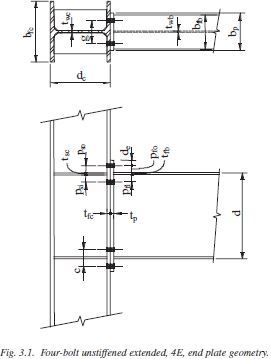ATSE
Structural
- May 14, 2009
- 594
My question is about a prequalified steel moment frame connection per AISC 358-16 and 341-16.
Roof connection vs floor connection.
My main references are AISC 358-16 and AISC Design Guide 4 (2nd edition), which don't appear to address single story frames, but instead also show figures and calculations for a continuous column above the moment frame beam - maybe I'm missing it.
Structure use: Large outside mechanical equipment cover with full height siding one side (3 sides open, 1 side sunshade)
High seismic area (Northern California), but wind controls stiffness and strength demand.
For medium size equipment shelters (say 20'x30') we usually use cantilevered HSS columns for the lateral system. When there is a full height side panel or for very large and tall open frames, the HSS gets large and the foundations get large - hence looking for frame action to resist wind and seismic.
1. The top deck is also the roof deck. Suggestions on clever framing / decking to provide from decent roof deck attachment and waterproofing, assuming that the approx 3.5" vertical column stub at the column locations (due to the top bolt row) is a necessity?
2. Is there a code-approved / recognized method to get rid of the 3.5" tall vertical column stub above the top of moment frame beam I've seen PEMB frames with "flush to top" end plates (that otherwise look a bit slender, as to be expected from PEMB framing). Seems like a silly question with an obvious answer, but looking for experience and don't mind getting smacked.

Roof connection vs floor connection.
My main references are AISC 358-16 and AISC Design Guide 4 (2nd edition), which don't appear to address single story frames, but instead also show figures and calculations for a continuous column above the moment frame beam - maybe I'm missing it.
Structure use: Large outside mechanical equipment cover with full height siding one side (3 sides open, 1 side sunshade)
High seismic area (Northern California), but wind controls stiffness and strength demand.
For medium size equipment shelters (say 20'x30') we usually use cantilevered HSS columns for the lateral system. When there is a full height side panel or for very large and tall open frames, the HSS gets large and the foundations get large - hence looking for frame action to resist wind and seismic.
1. The top deck is also the roof deck. Suggestions on clever framing / decking to provide from decent roof deck attachment and waterproofing, assuming that the approx 3.5" vertical column stub at the column locations (due to the top bolt row) is a necessity?
2. Is there a code-approved / recognized method to get rid of the 3.5" tall vertical column stub above the top of moment frame beam I've seen PEMB frames with "flush to top" end plates (that otherwise look a bit slender, as to be expected from PEMB framing). Seems like a silly question with an obvious answer, but looking for experience and don't mind getting smacked.

